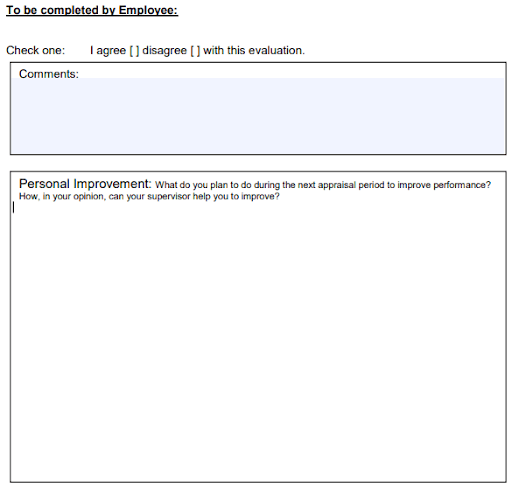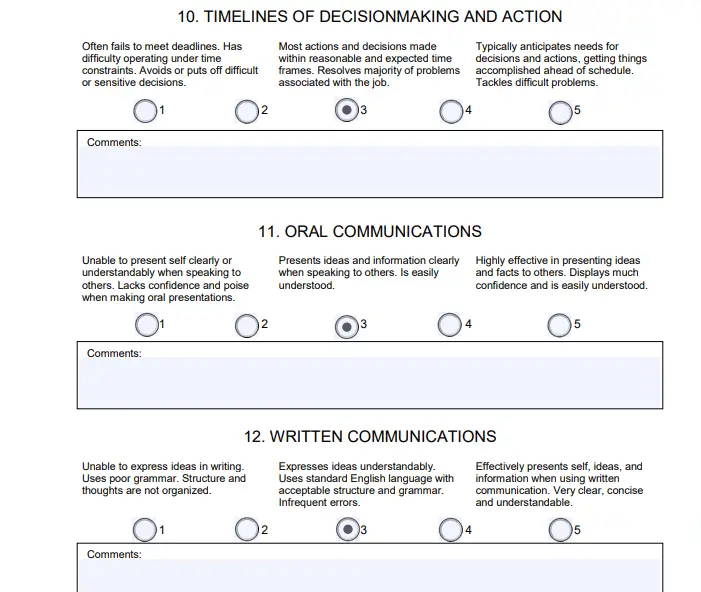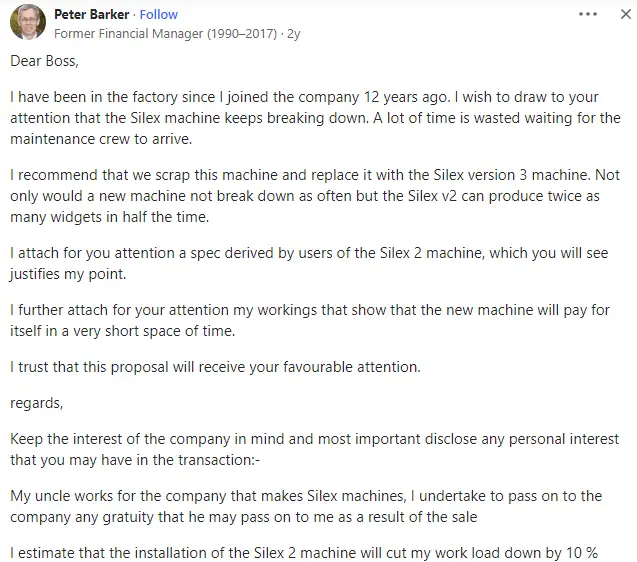Definition of upward communication
“Upward Communication is the means by which employees provide input to their managers, sharing insights, concerns, and suggestions that contribute to organizational improvement.” – Ricky W. Griffin
What is Upward Communication?
Upward communication is a form of communication within an organization that flows from lower-level employees to higher-level management or executives. It is the process of conveying information, feedback, concerns, suggestions, and progress reports from employees to their supervisors or senior leaders.
Upward communication is crucial for maintaining a transparent and efficient organizational structure. It allows employees to share their insights, experiences, and perspectives with higher-ups, enabling management to make well-informed decisions and take appropriate actions based on the feedback received.
Key features of upward communication flow include:
- Feedback: Employees provide feedback on diverse elements within the organization, including processes, policies, procedures, and management practices.
- Suggestions: Employees can offer suggestions for improvement, innovation, or problem-solving.
- Reporting: Lower-level employees report their progress, achievements, and challenges to their superiors.
- Information sharing: Employees share relevant information about their work, projects, and tasks with higher management.
- Employee concerns: Upward reporting allows employees to raise concerns, grievances, or issues that need attention.
Additionally, the channels for upward communication can vary and may include informal interactions, formal feedback sessions, suggestion boxes, open-door policies, skip-level meetings, and more.
Nature of Upward Communication
Internal upward communication is a vital aspect of organizational communication characterized by the flow of information from (subordinates, employees, or team members) to higher-level individuals (managers, supervisors, or leaders). It represents a two-way communication channel that enables subordinates to express their opinions and suggestions to their superiors.
The nature of upward communication fosters a culture of openness and inclusivity, allowing employees to contribute their unique insights and perspectives. This exchange of information empowers leaders to make well-informed decisions, promotes innovation, and helps identify potential issues or challenges within the organization.
Examples of upward communication at the workplace
Example 1.1 Below is the feedback form for employees for taking personal improvement inputs for the next appraisal period by an organization.  Example 2.1 Example of feedback taken from employees by the top management for their superior performance in the form of a questionnaire.
Example 2.1 Example of feedback taken from employees by the top management for their superior performance in the form of a questionnaire.  Example 3.1 Below is an example of an upward communication letter written by an employee to his boss. The letter initiates a recommendation from Peter to his boss for changing old machinery.
Example 3.1 Below is an example of an upward communication letter written by an employee to his boss. The letter initiates a recommendation from Peter to his boss for changing old machinery.

Examples of Upward and Vertical Communication
- Departmental Report: The marketing department compiles a monthly report on the results of their recent advertising campaigns. The report is shared with the marketing manager, who then forwards it to the director of marketing for review and further dissemination to upper management.
- Budget Approval Process: The finance department creates a budget proposal for the upcoming fiscal year. The proposal is reviewed by the finance manager, who submits it to the CFO for approval. Once approved, the budget is shared with department heads for implementation.
- Policy Implementation: The HR department develops a new workplace diversity policy. The policy is reviewed by the HR manager, approved by the director of HR, and then distributed to all employees through company-wide announcements.
Variables of Upward Communication
Upward communication consists of two primary variables to ensure the effective transmission of information and feedback. They are as follows:
1/ Employee Silence:
Employee silence refers to the phenomenon where employees choose not to speak up, express their opinions, or voice their concerns about workplace issues, even when they have valuable insights or feedback. It can be caused by various factors, including fear of negative response, perceived ineffectiveness in speaking up, lack of psychological safety in the workplace, or the belief that their input will not be valued or acted upon.
Impacts of Employee Silence:
Employee silence can have significant negative consequences for an organization, including:
- Lack of innovation: If employees don’t share their creative ideas or suggestions, the organization may miss out on valuable innovations and improvements.
- Unaddressed problems: Issues and challenges within the organization may go unnoticed and unresolved, leading to potential inefficiencies and declining performance.
- Low employee morale: When employees feel unheard, it can lead to decreased job satisfaction and engagement, resulting in reduced productivity and higher turnover rates.
2/ Organizational Dissent:
Organizational dissent refers to the expression of disagreement, opposition, or conflicting views about organizational decisions, policies, or strategies by employees or groups within the organization. It involves employees openly challenging the status quo or providing alternative viewpoints to existing practices. Dissent in organizations can be constructive or destructive, depending on how it is expressed and handled:
- Constructive dissent: When employees engage in constructive dissent, they express their opposing views respectfully and constructively. This type of dissent can lead to valuable discussions and improvements in decision-making processes. Constructive dissent encourages critical thinking, helps identify potential flaws in strategies, and nurtures an environment of transparent conversations and ongoing improvements.
- Destructive dissent: On the other hand, destructive dissent involves negative or disruptive behaviors, such as personal attacks, undermining colleagues, or spreading rumors. Destructive dissent can harm team morale and create a toxic work environment.
To effectively manage organizational dissent, leaders should cultivate an atmosphere that encourages open conversations, values diverse perspectives, and respects differing opinions. Constructive dissent should be welcomed and actively sought, and employees should feel empowered to express their disagreements without fear of negative reply.
Diagram of upward communication?

Objectives of Upward Communication
The objectives of upward communication encompass the goals that this form of communication serves within an organization. The primary objectives of upward communication include:
1/ Employee Feedback and Input: The primary objective of upward communication is to encourage employees to provide feedback to their managers and higher-ups. This feedback is essential for understanding employee perspectives, needs, and challenges. As a result, it can contribute to improved organizational decision-making and more effective problem-solving.
2/ Alignment of Goals and Objectives: By fostering upward communication, organizations can ensure that the goals and objectives set by the leadership are effectively communicated to all employees. This alignment contributes to the development of a collective understanding of purpose and orientation across the entire organization.
3/ Building Trust and Transparency: Transparent communication is crucial for building trust between employees and management. Upward communication promotes openness and honesty in the exchange of information, which, in turn, strengthens relationships and enhances the organization’s overall credibility.
4/ Talent Development and Recognition: Upward communication enables managers to identify and acknowledge the skills, talents, and achievements of their team members. Recognizing employee contributions encourages a positive work environment and encourages professional growth and development.
5/ Organizational Improvement and Innovation: By seeking ideas and suggestions from employees at all levels, upward business communication facilitates a continuous improvement process within the organization.
6/ Implementing Organizational Change: When organizations are undergoing changes, upward communication is crucial for understanding how these changes affect employees and for gathering insights to improve the change management process. Overall, the objectives of upward communication are to create a collaborative and inclusive work environment, maximize the potential of employees, and drive organizational success through effective and open communication channels.
Extra Resource
Uses of upward communication
- Feedback
- Reporting
- Problem-solving
- Decision-making
- Innovation
- Employee morale
- Conflict resolution
- Training and development
- Strategic planning
- Information Sharing
Types of Upward Communication
According to the typology proposed by Katz and Kahn, upward communication can be categorized into four distinct types:
1/ Information about the Subordinate: This type of upward communication involves sharing information about oneself with a supervisor. It may include both personal and professional details. Personal information may involve more intimate details like family, hobbies, and personal challenges.
On the other hand, professional information relates to job performance, work-related problems, accomplishments, or obstacles faced by the subordinate. By sharing this information, subordinates aim to establish a more understanding relationship with their supervisors and seek support or guidance when needed.
2/ Information about Coworkers and their Problems: In this form of upward communication, subordinates provide information to their managers about their coworkers and any issues they may be facing. Managers may not always be fully aware of what is happening with every individual due to their own workloads and responsibilities. Therefore, subordinates play a crucial role in reporting problems related to their coworkers, such as performance issues or unethical behavior.
By sharing such information, they assist managers in taking appropriate actions to address the problems and maintain a productive and safe work environment.
3/ Organizational Procedures & Practices: Upward communication about organizational procedures and practices involves providing feedback to management on the effectiveness and impact of existing policies, rules, and benefits within the organization.
Since managers might not directly experience the implementation of these procedures, subordinates become valuable sources of information about their practicality, potential stress, and resource allocation. By sharing their insights, subordinates help management identify areas where adjustments and improvements are needed to enhance efficiency and employee satisfaction.
4/ The task at Hand: This type of upward communication is focused on conveying relevant information about the tasks and responsibilities assigned to the subordinate. It includes asking for clarifications, requesting additional resources or support, updating supervisors on the progress of projects, and seeking guidance or information necessary for successful task completion.
Communicating task-related information is crucial for maintaining clear communication lines, ensuring work is on track, and facilitating effective collaboration between subordinates and supervisors. Additionally, Dennis Tourish and Paul Robson suggest a fifth form of upward vertical communication called “critical upward communication,” which focuses on raising critical issues and concerns within the organization.
Purpose of upward communication in the workplace
The purpose of upward communication is diverse and plays a crucial role in fostering effective communication within organizations. Its primary objectives are:
1/ Sharing ideas and suggestions: Employees often hold valuable insights and creative ideas that can contribute to the organization’s success. Upward communication provides a platform for employees to share their suggestions and creative solutions.
2/ Expressing concerns and grievances: Employees may encounter challenges or face issues in the workplace that need to be addressed. An upward flow of communication enables them to voice their concerns and grievances, allowing management to take corrective action and ensure employee well-being.
3/ Fostering a transparent culture: Encouraging upward communication promotes transparency within the organization. Employees are more likely to trust the leadership when they see that their input is genuinely valued and taken into account when making decisions.
4/ Identifying potential issues: By actively seeking feedback from employees, organizations can identify potential problems and address them before they increase into significant challenges. Overall, the purpose of upward communication in a workplace is to create an open and inclusive communication environment where employees are encouraged to share their thoughts and contribute to the organization’s growth and success.
What is upward feedback and how to give upward feedback?
Upward feedback is the process of providing feedback from lower-level employees to their higher-level managers or supervisors. It is a form of communication that empowers subordinates to share their observations and evaluations about their managers’ performance, leadership style, and overall work dynamics. Upward feedback is essential for fostering a culture of open communication, continuous improvement, and mutual understanding within an organization.
Giving upward feedback effectively requires careful consideration and a constructive approach to ensure that the feedback is well-received and leads to positive outcomes. Here are some guidelines for providing upward feedback:
- Choose the right time and setting: Select an appropriate time and place to deliver the feedback. Make sure it’s a private and comfortable setting, allowing for an open and honest conversation.
- Be Specific and Objective: Focus on specific behaviors, actions, or situations that you want to address. Utilize specific examples to demonstrate your points and avoid making them personal or emotional.
- Use the SBI model: Follow the “Situation-Behavior-Impact” model. Describe the situation, specify the behavior or action you observed, and explain the impact it had on you or the team.
- Be constructive: Present your feedback in a positive light. Rather than focusing on criticism, offer ideas for enhancement and possible solutions.
- Use “I” statements: Express your feedback from your perspective using “I” statements, as this makes it less critical and more about your own experiences.
- Focus on strengths and growth areas: Acknowledge the manager’s strengths while also highlighting areas where improvement is possible. A balanced approach encourages receptivity to feedback.
- Seek feedback on your feedback: To foster a culture of open communication, be open to receiving feedback on how you provided your upward feedback. This reflects a willingness to learn and grow in the feedback process.
Related Reading: Why is feedback important in the communication process
Principles of Upward Communication
Key principles of upward communication that are essential for ensuring its effectiveness within an organization:
1/ Openness and Accessibility: Upward communication should be based on an open-door policy, where employees feel encouraged and comfortable sharing their thoughts and concerns with their superiors. Management should be accessible and approachable, fostering a culture of open communication.
2/ Psychological Safety: Creating a psychologically safe atmosphere is essential for encouraging upward communication. Employees must have the confidence to express their opinions and ideas without the concern of facing negative responses or adverse outcomes.
3/ Active Listening: Effective upward communication requires active listening on the part of managers and leaders. It’s important for them to listen attentively to what employees have to say, displaying empathy and understanding their perspectives.
4/ Timely and Regular Communication: To address issues promptly, upward communication should be timely and ongoing. Regular communication channels, such as team meetings or feedback sessions, can facilitate this continuous flow of information.
5/ Two-Way Communication: Formal upward communication should be a two-way process, allowing for dialogue and exchange of ideas. Managers should respond to employee feedback, acknowledging their input and taking necessary actions when appropriate.
6/ Transparency and Honesty: Honesty and transparency are fundamental principles of upward communication. Leaders should be honest in their communication with employees and share relevant information about organizational goals, challenges, and decisions.
7/ Feedback Loop Closure: Ensure that the feedback loop is closed, meaning that employees receive feedback on the suggestions or concerns they raised and see how their input contributed to decisions or improvements. By following these principles, organizations can create a strong foundation for a button-up communication model that fosters trust, collaboration, and innovation.
Related Reading: Principles of effective communication in business communication
Important Functions of Upward Communication in Modern Organizations
In modern organizations, upward communication serves several important functions that contribute to their overall efficiency, adaptability, and success. These functions are crucial for upholding a positive work environment and accomplishing organizational goals. Here are the key functions of upward communication in modern organizations:
1/ Feedback on Downward Communication: The first function of upward communication is to provide feedback on the effectiveness of previously conveyed downward communication. When messages are sent from higher-level management to lower-level employees, it is crucial to know whether those messages have been received, understood, and implemented successfully.
Upward communication allows management to measure how well their messages have been received and whether they need to make adjustments or clarifications based on the feedback received from subordinates.
2/ Empowerment and Participation: The second function of upward communication is to empower individuals at the lower levels of the hierarchy by giving them a voice in organizational policies and procedures. By allowing subordinates to contribute their opinions and suggestions, upward communication fosters a sense of participation and involvement in decision-making processes.
3/ Testing Reactions to Change: The third function of upward communication is to test how employees will react to potential changes in the organization. Before implementing significant policy or procedural changes, management often seeks to determine the reactions of employees.
This is done through focus groups or other forms of upward communication to understand how the changes might be perceived and what concerns or resistance might arise. By gathering this information, management can tailor their communication strategies, address potential challenges, and foster a smoother transition when introducing changes.
4/ Adaptability and Agility: Modern organizations need to possess the ability to adjust to shifting market conditions and evolving customer demands. Upward information flow enables the organization to stay agile by receiving timely information about emerging challenges or opportunities.
How to Foster Upward Communication in Organizations?
Fostering upward communication in organizations requires a deliberate and proactive approach to create an environment where employees feel encouraged and empowered to share their thoughts, concerns, and ideas with higher-level management. Here are some strategies to promote upward communication:
1/ Establish a Culture of Open Communication: Leadership should set the tone by valuing and promoting open communication at all levels of the organization. It’s important to urge managers to be open, easy to approach, and willing to accept feedback.
2/ Create Psychological Safety: Ensure that employees feel psychologically safe to express their opinions without fear of negative consequences. Encourage a no-blame culture where feedback is seen as an opportunity for improvement.
3/ Provide Regular Communication Opportunities: Host regular town hall meetings, team huddles, or feedback sessions where employees can share their thoughts and concerns directly with management.
4/ Empower Frontline Managers: Encourage frontline managers to be advocates for their team members’ ideas and concerns. Provide them with the tools and resources to facilitate upward communication effectively.
5/ Set Clear Objectives: Clearly communicate the objectives and goals of upward communication initiatives. Explain to employees how their input contributes to decision-making and organizational improvements.
6/ Implement Actionable Follow-Up: Ensure that feedback is acted upon and addressed in a timely manner. Inform employees about the outcomes of their input, demonstrating that upward communication leads to measurable effects.
7/ Encourage Peer-to-Peer Communication: Encourage employees to communicate with their peers and team members, fostering a culture of open dialogue within teams and across departments.
Methods for Improving Upward Communication
To make upward communication effective, it is important to create an environment where employees feel at ease sharing their thoughts and ideas without worrying about unfavorable outcomes. Here are some ways to enhance upward communication:
(A) Establishing Clear and Accessible Channels:
- Suggestion Boxes and Feedback Portals: Implement physical or digital suggestion boxes and feedback portals where employees can anonymously or openly submit their ideas, concerns, and feedback. These channels provide a straightforward way for employees to communicate their thoughts.
- Regular Employee Surveys and Polls: Conduct periodic surveys and polls to gather comprehensive feedback on specific topics or overall organizational matters. Surveys can provide valuable insights into employee sentiments and opinions.
- Open-Door Policy and Skip-Level Meetings: Encourage an open-door policy where managers make themselves available to employees for discussions. Additionally, arrange skip-level meetings, where higher-level managers engage with lower-level employees directly to gather their feedback.
(B) Training and Development:
- Communication Skills Workshops: Offer workshops and training sessions to enhance employees’ business communication skills, including effective message delivery, active listening, and concise articulation of ideas.
- Emotional Intelligence Training: Provide training in emotional intelligence to help employees recognize and manage emotions, facilitating more empathetic and constructive communication.
(C) Recognizing and Rewarding Feedback:
- Acknowledging Valuable Input: Publicly recognize and appreciate employees who provide valuable feedback, encouraging others to share their thoughts as well.
- Implementing Employee Suggestions: Act upon actionable and innovative ideas generated through upward communication. Demonstrating that feedback leads to actual improvements reinforces the importance of sharing ideas.
(D) Encouraging Anonymity in Feedback:
- Anonymous Surveys and Feedback Mechanisms: Offer the option of confidentiality in certain feedback channels, such as surveys, to encourage employees who may feel hesitant to share their thoughts openly.
- Confidentiality Assurance: Ensure that feedback received anonymously is treated with utmost confidentiality to build trust and encourage open responses.
(E) Leading by Example:
- Managers and Executives as Role Models: Leaders should actively participate in upward communication and demonstrate their willingness to receive and act upon feedback. This sets the tone for open communication throughout the organization.
- Encouraging Two-Way Communication: Leaders should actively seek feedback from their teams and demonstrate responsiveness to employee input, fostering a culture of two-way communication.
(F) Feedback Follow-up and Accountability:
- Timely Response to Employee Feedback: Ensure that all feedback is acknowledged promptly, and employees are informed about the actions taken or the reasons behind certain decisions.
- Assigning Responsibility for Action Items: Clearly assigns responsibility for addressing feedback and implementing necessary changes. Holding individuals accountable ensures that feedback is not overlooked.
(G) Creating a Positive Feedback Culture:
- Encouraging Constructive Criticism: Promote the idea that constructive criticism is valued and that employees can provide feedback without fear of negative consequences.
- Cultivating a Culture of Learning and Improvement: Emphasize that feedback is essential for continuous improvement and that errors are viewed as chances for growth instead of shortcomings.
By implementing these strategies, organizations can foster effective upward communication, leading to improved employee engagement, better decision-making, and a positive work environment where employees feel heard and valued.
Extra Resource
Upward Management skills
Based on experience and expertise here are some of the upward management skills that can help you communicate effectively with your superiors:
- Active listening
- Articulate communication
- Empathy
- Diplomacy
- Strategic thinking
- Time management
- Problem-solving
- Relationship building
- Emotional intelligence
- Attention to detail
Forms of Upward Communication
Forms of upward communication are the different channels or methods through which information and feedback are conveyed from junior staff to senior managers or leaders within an organization. The various forms of upward communication include:
1/ Verbal Upward Communication: This form involves face-to-face interactions between employees and their superiors. It can take place in one-on-one meetings, team briefings, or town hall sessions, allowing for immediate feedback and personal engagement.
2/ Written Upward Communication: This form includes written messages such as emails, memos, reports, and formal feedback forms. Employees can express their ideas or concerns in a structured and documented manner, ensuring clarity and easy reference.
3/ Employee Feedback Surveys: Surveys are a popular form of upward communication where employees provide feedback on various aspects of the organization, such as job satisfaction, organizational culture, leadership effectiveness, and more.
4/ Suggestion Boxes: Suggestion boxes, whether physical or digital, offer a mechanism for employees to submit their anonymous suggestions, ideas, or concerns, making it easier for them to share feedback candidly.
5/ Team Meetings: Regular team meetings are a forum for employees to discuss updates, challenges, and ideas with their immediate supervisors or team leaders.
6/ Employee Focus Groups: Focus groups gather a small representative sample of employees to participate in structured discussions about specific topics, providing valuable insights from diverse perspectives.
Importance of upward communication
Key reasons why upward communication is vital in business communication:
1/ Breaking Down Hierarchical Barriers: Upward communication helps break down hierarchical barriers within organizations by allowing information and feedback to flow freely from employees at all levels to their superiors. When employees are at ease sharing their ideas and concerns with higher-ups, it promotes a more inclusive and collaborative environment. Breaking down hierarchical barriers fosters a sense of equality and encourages open communication, leading to better decision-making.
2/ Improving Employee Satisfaction and Retention: Organizations that prioritize upward lines of communication tend to have higher employee satisfaction levels. When employees feel heard and respected, they are more likely to be satisfied with their work environment. Additionally, as they are engaged and empowered, they have a sense of purpose and fulfillment. This positive work experience leads to increased employee retention rates, which in turn, lower turnover expenses.
3/ Improved Decision-Making: Upward communication ensures that decision-makers have a comprehensive understanding of the organization’s strengths, weaknesses, opportunities, and threats. This information enables leaders to make well-informed decisions that consider multiple perspectives, reducing the risk of making uninformed choices.
4/ Alignment with Organizational Goals: Upward communication helps align employee objectives with the organization’s broader goals. By involving employees in the decision-making process and sharing the organization’s vision, employees become more committed to achieving those goals.
Upward Vs Downward Communication
The differences between upward and downward communication can be highlighted in the table below:
Aspect | Upward Communication | Downward Communication |
Direction | Flows from lower-level to higher-level individuals or management. | Flows from higher-level to lower-level individuals or subordinates. |
Purpose | Allows employees to share feedback, ideas, concerns, and suggestions with higher-ups. | Informs employees about organizational goals, instructions, policies, and decisions. |
Nature | Often informal and open-ended. | More structured and formal. |
Channels | Includes suggestion boxes, feedback portals, surveys, skip-level meetings, etc. | Utilizes memos, emails, reports, meetings, etc. |
Information Flow | Provides insight into frontline experiences, challenges, and innovations. | Offers clarity on organizational objectives and expectations. |
Further Reading: Differentiate between upward and downward communication
Advantages and Disadvantages of Upward Communication
Advantages of Upward Communication | Disadvantages of Upward Communication |
1. Feedback and Employee Input: Employees can provide valuable feedback and suggestions, leading to improved decision-making. | 1. Filtering and Distortion: Information may be filtered or distorted as it moves up the hierarchy, leading to a loss of accuracy or relevance. |
2. Employee Engagement: Encouraging upward communication fosters a sense of ownership and commitment among employees. | 2. Fear of Retaliation: Employees may fear retaliation or negative consequences for expressing dissent or critical feedback. |
3. Innovation and Creativity: Upward communication allows diverse perspectives to contribute to innovative solutions. | 3. Time-Consuming: The process of upward communication can be time-consuming, especially in large organizations. |
4. Conflict Resolution: Open dialogue through upward communication enables timely conflict resolution. | 4. Limited Managerial Attention: Managers may be overwhelmed with a large volume of feedback, making it challenging to address every issue promptly. |
5. Enhanced Decision-Making: Valuable insights from employees support better decision-making at all levels. | 5. Selective Upward Communication: Employees may withhold feedback due to a belief that only positive feedback is valued. |
To know more check out our detailed guide on what are the advantages and disadvantages of upward communication
What are the barriers to upward communication?
Upward communication faces several barriers that can prevent the effective transfer of information from employees at lower organizational levels to upper management. Identifying and understanding these barriers is crucial for organizations to address them and create a more open and inclusive communication environment. Some common barriers to upward communication include:
1/ Hierarchical Barriers: Traditional hierarchical structures can create a sense of unease and make it challenging for lower-level employees to approach higher-ups with their ideas or concerns.
2/ Perceived Lack of Importance: Employees may believe that higher management will not value or take their opinions or feedback seriously, leading to hesitancy in sharing their thoughts.
3/ Lack of Trust: Insufficient trust between staff and management has the potential to discourage open and honest communication.
4/ Language and Jargon: The use of technical jargon or complex language by higher-level management might create communication barriers for lower-level employees who do not understand the terminology.
5/ Cultural Barriers: Organizational cultures that discourage dissent or value authority over collaboration can prevent upward communication.
Related Reading: Cultural barriers to communication definition
Frequently Asked Questions:
Q1) What is upward communication with an example?
Ans: Upward communication is characterized by the transfer of information from employees located at junior levels or subordinates to management at higher ranks within an organization. An example of Upward Communication includes when an employee identifies a potential issue with the current production process, which could lead to delays and increased costs. Instead of keeping the concern to themselves, the employee decides to utilize upward communication to share this information with their immediate supervisor or department manager.
Q2) What is the difference between diagonal and upward communication?
Ans: Upward communication refers to the flow of information from subordinates to superiors in the organizational hierarchy. Whereas diagonal communication can occur between individuals at different levels of the hierarchy and departments in an organization.
Q3) What does vertical communication mean?
Ans: Vertical communication refers to the flow of information that moves either upwards (subordinates to superiors) or downwards (superiors to subordinates) in an organization’s hierarchy. This type of communication can use both formal or grapevine channels of communication.
Q4) Is upward communication formal or informal?
Ans: Upward communication can be both formal and informal as it includes formal channels such as applications, suggestion boxes, reports, etc., and informal channels such as face-to-face conversations, phone calls, instant messaging, etc.
Related Reading: Types of formal communication channels
Q5) What is upward and horizontal communication
Ans: Upward communication involves the transmission of information within an organization, beginning with lower hierarchical levels and moving upwards. This includes employees or subordinates engaging in communication with their managers, supervisors, or executives. In contrast, horizontal communication relates to the exchange of information between individuals or departments positioned at the same hierarchical level within the organization.
Q6) What is called downward communication?
Ans: Downward communication refers to the flow of information within an organization, where information, directives, or messages are transmitted from higher-level individuals or departments to lower-level employees.



